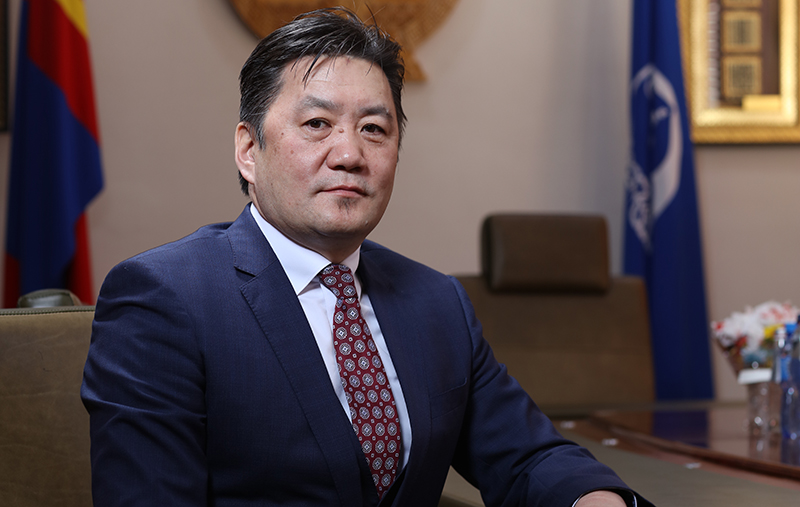Goals Of Growth: Q&A With Mongolia Central Bank Governor Byadran Lkhagvasuren

Byadran Lkhagvasuren, governor of the central bank of Mongolia, gave an interview to Global Finance about the bank’s future and potential stagflation.
Global Finance: Is stagflation likely to take hold in Mongolia?
Byadran Lkhagvasuren: Mongolia is sandwiched between Russia and China. Therefore, inflationary pressures arising from pandemic-related supply chain shocks are magnified significantly. According to our estimates, more than 60% of inflation dynamics are explained by an increase in the prices of imported goods and the recent sharp increases in oil prices.
We are seeing a gradual recovery in economic activity. In the first half of 2022, the economy grew by 1.9%, and we expect growth to reach 3% for the full year. Although growth in the mining, transportation and construction sectors is still weak, we are seeing a recovery in the services, trade and manufacturing sectors. We expect the mining and transportation sectors to recover once logistical issues are fully resolved in early 2023.
Although we are seeing a gradual recovery, real wage growth has been moderate and demand remains relatively weak. The Bank of Mongolia will continue to take appropriate policy measures to bring inflation down to our target range. Since 2021, the policy rate was increased by 400 basis points, and reserve requirements and other prudential requirements were tightened. According to our forecasts, we expect inflation to decline to our target range in late 2023.
GF: What is the medium-term growth outlook for Mongolia?
Lkhagvasuren: Despite short-term challenges, the medium- to long-term economic outlook remains strong. As part of the New Recovery Policy, the government of Mongolia is implementing reforms that will accelerate economic growth. As part of the program, Mongolia is building two new railroads to China that be completed in 2022 and significantly increase export volume and reduce transportation costs. In addition, the Oyu Tolgoi copper mine will start sustained production in the first half of 2023, which will more than triple copper exports at peak production.
With continued robust demand for commodities such as copper, coal, gold and iron ore, and the completion of key transportation infrastructure, the Mongolian economy will enjoy strong growth for many years to come.
GF: What is the situation regarding BOM’s undertaking quasi-fiscal operations and the need to meet the International Monetary Fund’s requirements?
Lkhagvasuren: In order to strengthen the Bank of Mongolia’s independence, governance and transparency, parliament amended the central bank law in 2018. One of the main amendments was to prohibit the central bank from implementing any quasi-fiscal operations. Since then, the Bank of Mongolia stopped all quasi-fiscal operations except the subsidized mortgage program.
At the onset of the pandemic in 2020, the parliament of Mongolia passed the anti-pandemic law to mitigate the adverse socioeconomic effects of Covid-19. As defined in the law, the Bank of Mongolia is required to continue the subsidized mortgage program and certain other operations until the end of 2022. Once the law expires at the end of 2022, the Bank of Mongolia will discontinue all quasi-fiscal operations. We have been fully transparent with the IMF and other international organizations about our operations.
GF: How does BOM intend to manage foreign exchange risks and speculative attacks on the tugrik?
Lkhagvasuren: Exchange rate flexibility is an important shock absorber. However, we need to have appropriate policy toolkits to mitigate the risks to the financial sector and the economy.
Since 2018, we gradually increased reserve requirements for foreign currency liabilities of banks to 18%. As a result, the share of banks’ foreign currency deposits declined from 30% in 2018 to 20% in 2021. In addition, we introduced regulatory measures to discourage banks from providing foreign currency loans, especially to borrowers without foreign currency earnings.
GF: What is the status regarding the Mongolian bank IPOs?
Lkhagvasuren: The Mongolian banking system is currently undergoing significant reforms. All five systemically important banks need to publicly offer public shares before the end of June 2023. However, the option to commence the procedure before the deadline remains open and we would endorse such initiatives.
As international best practice would suggest, all reforms are fraught with risks. For example, there may be supervisory overlaps, gaps, risks of miscommunication between the regulatory authorities and elevated compliance risks for banks due to supervision by both the Bank of Mongolia and the Financial Regulatory Commission. Nonetheless, the Bank of Mongolia remains steadfast in executing this reform successfully.
